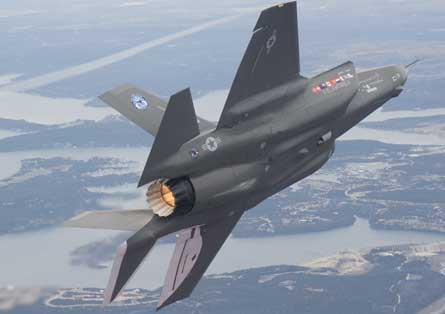A shortage of electrical power on board the carrier variant of the F-35 Joint Strike Fighter has forced Lockheed Martin to launch a redesign of two key subsystems, even as flight tests are set to resume within the next few weeks.
Lockheed engineers discovered in laboratory tests in late 2006 that the F-35C will need 33% more power than its on-board generator can provide. The aircraft's flight-control surfaces are powered by electro-hydrostatic actuators and the electrical system has to meet the condition when all the controls demand peak power in the same instant.
 |
|---|
© Team JSF |
The power gap was caused by flawed design estimates based on the average power demand over several seconds, says J D McFarlan, air vehicle integrated product team leader. Laboratory tests showed that instantaneous power demand could greatly exceeded the generator's 300kW capacity.
"We learned that what we call the peak power demand of all those actuators could sum up to an overall total demand greater than what the generator could provide, and for the carrier variant specifically," says McFarlan. "Luckily, we learned it in our lab."
Lockheed has contracted with Hamilton Sundstrand to increase the generator's power capacity by one-third to 400kW, he says. The US government has awarded a second contract to Pratt & Whitney to strengthen the JSF engine's gearbox to handle the extra power needed to drive the uprated generator, with the $71.5 million award covering nine systems to be completed by December 2009. The redesigned components should be the same weight and size as the previous systems, says McFarlan.
The additional work is not expected to delay flight testing of the F-35C, which should fly for the first time in the first quarter of 2009, he says, adding: "Most of the development for this is done through ground and lab testing."
Although the power shortfall is limited to the F-35C, the redesigned electrical generation system will be used in all three variants. The conventional take-off and landing F-35A and short take-off and vertical landing F-35B will be able to use the extra power to support mission system upgrades over the life of the programme, McFarlan says.
The US Government Accountability Office has warned repeatedly that the JSF programme assumes too much risk by concurrently developing and producing the aircraft.
Related articles:
Source: Flight International



















